to roll or not to roll after seeding?
Any thought on whether I should roll my lawn after seeding? From the research I did, some people recommend it while others say you shouldn't. Thanks for any thoughts you have on this!
Comments (32)
philes21
15 years agoYou can roll the seedbed, or you can ROLL THE HECK OUTTA THAT SEEDBED, CREATE COMPACTION, MAKE IT DIFFICULT FOR THE SEEDS TO PENETRATE THE SOIL AND/OR GROW AND GENERALLY SCREW THINGS UP.
To roll the seedbed, which is a good idea, use an empty roller, if the roller drum is metal. Totally empty. If the roller drum is one of the new plastics, put in a couple gallons of water, not much, and you should still be able to lift the roller comfortably by hand, as if to put that roller (and the water) into the bed of a pickup truck. If you can't do that comfortably, you have too much water in there, take some out. Roll the seedbed once, which will gently 'shove' the seed into the soil, so that the seed looks like --.-- (yep: the seed is fully pushed down, gently wrapped with soil), as opposed to --*-- (note that the seed is sitting above the soil). That 'empty' roller accomplished its purpose, not much weight is required, but that little touch will show some dividends.
To ROLL THE HECK OUTTA THAT SEEDBED, CREATE COMPACTION, MAKE IT DIFFICULT FOR THE SEEDS TO PENETRATE THE SOIL AND/OR GROW AND GENERALLY SCREW THINGS UP, put more water in the roller than was outlined above. If you really, really, wanna do some damage, fill the roller completely.
Good luck with it.
paulinct
15 years agoI'll just add that I had never rolled a new seeding in until last year, and I never won't ever again. Totally worth the hassle of the rental.
Related Professionals
Simpsonville Landscape Architects & Landscape Designers · Fitchburg Landscape Architects & Landscape Designers · Tempe Landscape Contractors · Barrington Landscape Contractors · Chesapeake Ranch Estates Landscape Contractors · Deerfield Landscape Contractors · El Sobrante Landscape Contractors · Firestone Landscape Contractors · Fort Worth Landscape Contractors · Matteson Landscape Contractors · Miller Place Landscape Contractors · Rancho Santa Margarita Landscape Contractors · Hawaiian Gardens Landscape Contractors · Apple Valley Swimming Pool Builders · Englewood Swimming Pool Builderseddie_il
Original Author15 years agoWould you recommend lightly raking in the seed before rolling? Thanks!
bpgreen
15 years agoAuteck--I don't think Paul's message is contradictory, just confusing. Usually, when somebody uses several negatives and/or a phrase like "never ever," they are doing it to add emphasis to the negative. In this case, I think what he meant is that he will never seed without rolling ever again. He will never not roll again, or, to put it another way, he will always roll.
v1rt
15 years agoYep, that was very confusing! :D Glad you explained it bpgreen. That means that rolling over the seeds is highly recommended.
v1rt
15 years agoI remember my daughter brought home a translucent drinking cup with dirt for their grass planting project. I asked her few minutes ago how they put the seeds. She told me that they just spread the seeds on top of the soil, however, they placed another 1/2" layer of dirt. Then just watered daily. The grass grew really well.
So how deep does the slit seeder go?
paulinct
15 years agoWhoops, sometimes I confuse myself, bpgreen got it right, but just to clarify: Never again will I not fail to not roll my seeds.
Ever.
paulinct
15 years agoHi v1rtuos1ty,
Half an inch is too deep for grass seed. I can't remember exactly, but there is some rule of thumb out there about planting seeds to a depth of three times their "height" with "height" meaning, assuming the seed is lying on its side, as it is apt to do when you first put it down, its width. In the case of KBG and its tiny tiny seeds, this translates roughly to "very, very shallow." Basically I think you just want to make sure that the seeds are in good contact with the soil, because this makes it easier for water to enter the seed.
Just my $.02, and hopefully someone else has some more specific advice, but in any event the depth is adjustable on those things, but it will only be constant if your lawn is a bowling green. If you have bumps and furrows, like most of us do, there will be some seeds that end up in non-optimal postions. But even some of them will manage to germinate anyway, so unless you have major bumps I wouldn't be too worried about that.
v1rt
15 years agoI actually haven't used a slit seeder. Does it allow us to set it at N lbs per 1000 sqft?
dchall_san_antonio
15 years agoAs long as some of us are contradicting others or ourselves...
The seed should be lying on top of the ground...unless you are slit seeding. It should not be raked in. It should be rolled over and pressed into the soil like a herd of bison would do with their feet. Rolling improves germination by improving the contact between seed and soil. A slit seeder does the same thing in a different way. Having soil in contact with the seed keeps the seed moist longer without blocking the sunlight that the seed and seedling need to germinate and set a root.
For seeding into existing grass, a slit seeder would be the only tool to rent. For seeding on bare soil, the roller would be preferred.
larjoranj
15 years agoThe slit seeders are adjustable. I set it to get around 1/2 inch. But, as someone mentioned, since most yards are not smooth there is variation. You will hit bumps where the blades make almost no contact but overall they do a very good job.
As far as setting the hopper for a certain number of lbs per 1000 ft, I don't use the slit seeder to put down the seeds, only to make the slits. The ones I have used drop seeds while the blades are engaged. I have found that you will hit bumpy spots and the seeder will quit moving forward for a few seconds until you give it a push over a bump, but as long as the blades are spinning the hopper is dumping seed and can dump quite a little pile if you don't get it moving again quickly. After the first time I used one, I now seed first with a broadcast spreader and then use the slit seeder. It accomplishes the same thing, since the hoppers are on the front and drop the seed in front of the blades anyway, but you don't end up with uneven seed distrubution. The slit seeder then digs shallow trenches, but also the dirt is kicked up and spread some between the trenches, giving a little dirt cover to most of the seeds. I also core aerate first each fall and when I overseed the slit seeder will also chop up some of the cores that are lying on the surface.
As far as raking versus rolling, It seems we all agree the seeds can't just be lying loosely on top of the soil to get a good germination rate. A roller will definitely smash the seed down into the top of the dirt some. On the other hand, I don't see how you can have better soil contact with a seed than to rake it in and have it actually slightly under the surface, where the soil is in contact with it on all sides.
This is copied from the Pennington seed site on how to start a lawn from seed.
Prepare a good crumbly seedbed: till 6-8 inches deep, firm and level well after tilling.
Fortify the seedbed with fertilizer and lime. A soil test is the surest way to establish proper rates. Applications should be made uniformly and worked into the top 3/4 inches (18 mm) of soil.
After all materials have been worked in, firm up the soil by rolling to assure that no soft spots remain that would settle later on.
With a wide-toothed rake or tine-harrow rake the area into a crumbly state with about an inch (24 mm) of loose soil at the surface.
Apply the seed with a drop or cyclone spreader. For sloped or hard to reach areas hydroseeding is recommended.
Lightly rake the seed into the soil. Seed needs to be bedded in the soil to germinate quickly and uniformly. Not necessary if hydroseeding with a mulch.
Optional mulching with straw or hay is beneficial, especially on sloping areas to hold soil and seed in place in heavy rain or during watering.
In the absence of rain the newly seeded area should be watered 2 - 3 times daily.rcnaylor
15 years agoI have seeded by raking in, rolling, slit seeding and just broadcasting.
Of course, the kind of soil, its friability or how much its loosened up, amount of vegetation all go in to what is best. In other words, case by case controls.
But, on AVERAGE I'd would say the way to consistently get the best germination would be in this order 1) slitseeder, 2) rolling, 3) broadcasting only and 4) raking.
Here is why I put raking last. It is virtually impossible to do it uniformly. You will invariably sweep some of the seed as you move the soil and there will be areas where there is a lot of seed and other areas with too little. Second, you will get some of the seed buried too deep in the soil. Even on unlevel surfaces, rolling will be more consistent.
The advice against raking only applies to the final step of seeding, of course. I've raked many a spot to get it loosened up for seeding, put out the seed and tamped it lightly to get it in good contact with the soil.
FWIW, when overseeding an existing lawn I mow short (catch the clippings), I run the slitseeder empty at its deepest setting several times to loosen up the soil then put the seeds in the hopper, raise the depth setting to a good level and then use the slitseeder to put out the seed, it is very good at getting it at the right depth.
eddie_il
Original Author15 years agoAlright, this is the big weekend, I plan on getting my yard seeded. You guys have made good points about 1) rolling and not raking helps to keep the seed uniform and gives good contact but also 2) raking helps to cover the seed. Does just rolling actually cover the seed or just push it down into the dirt leaving it still exposed? How does rolling and then using a topdressing sound? The topdress would be a lot of work but if its worth it I'll do it. The only topdressing that is economical around here is mushroom compost (not a fan of straw since its too windy here) since I can by it by the truck load (pick up). I would have to spread it by hand and "lightly" rake it with a leaf rake trying not to disturb the seed. How does this sound? Hmmm, maybe I'm creating too much work and should just rake and roll. Let me know if you have any last minute advice. Thanks!
rcnaylor
15 years agoSeed, roll, keep wet.
However, a good topdressing is always a good thing for a yard. But, you shouldn't have to do it to get your grass up A-OK.
One time I hand seeded an area and didn't roll it. I wound up putting a light layer of peat moss on it to keep the birds from getting half of it. But that was a bare area. I have never had the bird problem overseeding in to existing grass and then rolling.
eddie_il
Original Author15 years agoI'm starting from scratch here so I don't have any grass right now. That's a good point about the birds. Is the seed still exposed after just rolling (no raking) to where this would be a problem? Thanks for the tips.
paulinct
15 years agoThere is an old expression meant for vegetable garden seeding, I forget it exactly but it goes something like "one for the robin, one for the mouse, one for the rabbit, and one for the house." It is surely frustrating to watch all of those fat little robins and stealthy, efficient blackbirds apparently sucking up all of your seed, day after day, but for the most part they don't make any real dent if you seed at the recommended rate for whatever seeds you are planting.
I'm sorry if I missed it, but what kind of seed are you planting?
eddie_il
Original Author15 years agoHaha nice expression, Its a good point. I plan on putting 8 lbs per 1000 ft which is at the uppper end of the recommended rate of the place that sells the seed. Im using a blend of 60% fescue (4 different types), 20% KBG adn 20% rye, its from a well respected local company. I bought this a while ago, after reading this forum it sounds like there might be better options. However I I know several people that have had real good results with it so I think I'll go ahead and use it. We have heavy clay here and this is suppose to do well in that? I'm still learning...
By the way, I saw the photos of your yard, it looks great! If my yard turns out half that good, i'll be happy. Thanks for the advice.
paulinct
15 years agoThank you for the compliment! Yes, I like that expression too. Some old time conventional wisdom that I think has a bit of truth in it. Anyway, if you are seeding at the upper end of the recommended rate for that blend then I think you will be fine. Do resist the temptation to go over the recommended rate: if you seed too heavily you might get what looks like better germination, but then more problems down the road as all of those new plants try to out-compete one another.
Also, be sure to keep up your initial watering schedule for at least three weeks. You will see the rye and fescues come up fast, but if you ease up on the watering then you may lose the KBG, which takes a bit longer to germinate. So after you see your first flush of new growth, start looking very closely for very small, new seedlings, coming in all at once. This is the KBG, and is important because KBG seeds are tiny compared to the others, so the ratio of seeds does not mean that only 20% of your seeds are KBG, but rather that 20% of your seeds *by weight* are KBG. The intention is for those seeds to constitute much more than 20% of your lawn, so you want to make sure they germinate and establish well.
Hope that helps (and is accurate, but if I got something wrong I'm sure someone here will correct me...), good luck!
Paulpaulinct
15 years agoP.S. if no one has suggested using starter fertilizer with crabgrass control, I would highly recommend that. There is a chemical in that stuff called "siduron" (branded Tupersan) that inhibits crabgrass germination while letting desirable grasses germinate. It is not cheap, but seeding this time of year you will almost certainly encourage crabgrass by watering so frequently. Even if you use the stuff you may get some crabgrass, but if the CG seeds are in your soil already it will be far worse if you don't.
You may know this already, but just to be sure, by "starter fertilizer with crabgrass control" I don't mean starter fertilizer plus any old separate crabgrass control product - most of those products will prevent your lawn from germinating. I mean a single product labeled "starter fertilizer with crabgrass control." Anything labeled like that will have Siduron as the active ingredient, but look at the label to be sure. An alternative would be to use starter fertilizer and then straight Siduron (Tupersan) separately, but most places don't seem to stock straight Siduron/Tupersan.
Sorry to go on and on, again, good luck!
eddie_il
Original Author15 years agoPaul - Thanks for the info on the KBG, I didn't realize seed was smaller, good to know and I'm happy to hear that since KBG since I'm hoping it will take over if the conditions are right. I'm really glad you mentioned Tupersan!! I wasn't aware that existed and its exactly what I need. I take you can apply that after you seed? I'm seeding today and the only place that sells that stuff around here is closed today. From what I gathered from their website you can. I think this will really help my yard since I'm planting so late and its weed season. Thanks!!
paulinct
15 years agoYes, put it down as soon as you can get it, best tomorrow. The timing of the application doesn't matter for any reason except that you don't want to be stepping all over your newly germinating seeds while you're doing it, or you will kill them. And since that rye and fescue should start germinating any day, do it ASAP! Of course, apply only at the recommended rate.
Like I mentioned, if you have CG seeds in your soil already, you will still get some CG, both because some of it has probably already germinated, and because Tupersan is a relatively weak pre-emergent (which I imagine is part of why it still lets grass germinate). Still, no doubt, I would do it, in part because CG continues to germinate as the temps rise. You will need to re-apply it in a month or so, since it is only indicated to work for four weeks (I think), so buy twice what you need for one application, and then re-apply next month.
All of that said (and of course, as you probably know), it is much easier to re-seed in the fall. But if you just can't wait, I say use all of the advantages you can get your hands on, particularly siduron/tupersan. And watering well until you are sure that the KBG has germinated.
There are some posts here describing how many seeds there are in a pound of a given variety. I am no expert, but IIRC it is roughly over a million seeds per pound of KBG, versus say 300,000 or so for your other varieties (roughly speaking), so with some simple math you will see how important it is to get those KBG seeds up and growing, especially if you are trying to encourage KBG!
eddie_il
Original Author15 years agoI seeded yesterday and today was the first day my lawn got wet. Do you how many days I have before germation could start and I need stay off the lawn?
That's intersting info on KBG. Thanks again for all your help.
bpgreen
15 years agoThe rye will probably come up in less than a week, the fescue in about a week and a half and the KBG in about 3 weeks.
That means that the KBG will be brand new seedlings in mid June. Spring is not the best time to try to seed a cool season lawn, and late spring is even more problematic. You'll really need to baby your grass this summer if you want any of it to be there in the fall.
eddie_il
Original Author15 years agoThanks for the advice. I realized I got a late start due to bad weather on the weekends I was in town and good weather when I was gone. I have a sprinkler system so I plan on watering 3 times a day, probably around 5 AM, noon and 5 pm. I'll have to do some research on the exact amount ot water. Let me know if you have any other advice. Thanks!
arjo_reich
15 years agobestlawn wrote:
8. Topdress 1/4 inch layer compost, peat moss, or clean straw (weed-free).
9. Irrigation schedule
water 15-20 minutes twice a day for two weeks
water 20-30 minutes once a day for one week
water 30-45 minutes once a day every other day for one week
water 30-45 minutes once a day twice a week for one week
move into deep irrigation, increasing the time to provide 1 inch of water all over and decreasing the frequency to just once a week.Starting off, the schedule supplies roughly 1/4 inch of water, then increases that amount while decreasing frequency of application at the same time. Like practically everything that concerns lawn care, this schedule is a general guideline and should be modified to accommodate your specific conditions. The lengths of time should be modified if you have an automatic sprinkler system since that will not take as long to provide adequate moisture. So, decrease amount of water (time) but maintain frequency as is. The tuna cans test is recommended. If it is still especially warm, you may want to irrigate 3 times a day (10-15 minutes if necessary) for that first couple weeks. Your objective is to keep the upper 1 inch of soil moist and not let the seeds dry out.
Baby the grass for the rest of year. Once the seeds begin to sprout, don't walk on it if at all possible. First mowing is when the new grass reaches two inches.I omitted the first seven steps because they were all "prior to sowing seed" steps...
John Clark
7 years agoI put down 10 yards of lawn dirt over a poorly established lawn. I spent a long time on a dirt rake levelling it. I then seeded and used a stiff broom. Drug it behind me around the new dirt, now seeded. I'm real happy with the way things turned out. My footprints are showing in the newly puddled water but they will go away as grass comes. After 3 days of drizzle rain its perfect.
I mixed summer rye with my preferred lawn grass. It will germinate and come up within days and last the summer protecting seeds showing from birds and wind.
I wanted to roll but the landscaper who leveled my dirt with his small bobcat said best not to. His reason it would just force the new dirt into the old contours. Better let the water settle it.
High Tech Turf & Trees
6 years agolast modified: 6 years ago
Aerating with a golf course putting green aerator with aeration tines set on 2 inch centers works great for seed bed preparation. We like using turf tractors (w high flotation turf tires) and rear mounted 3 pt hitch cam driven aerifiers for at least two complete passes over the same areas. The first pass is set at 3" to 6 inch depth for root penetration, and a 2nd pass set at 1/2" to at most 1 inch tine depth. The wider the tine the better (7/8" wide are great!) These create protected seed pockets with GREAT TILTH, and hold moisture. These professional aerators roll and smooth simultaneously JUST BEFORE before this final tilth and subsequent seeding takes place. One major benefit to this system is that the ground remains firm enough to still move over it. It's as if the un-aerified soil between aeration holes acts as a soil "grid", further protecting the "seed pockets" between them. This in essence prevents the plugged seed pockets from being compacted or disturbed. This system can work for all new plantings, and when overseeding existing turf. It does an amazing job where existing turf is stripped off with a sod cutter, and then this system is applied. We've done it on projects ranging from entire golf courses, to sport fields, and small residential sites. This can also be combined with running sub-soiling "Mole Ploughs", and vertical lineal aerators like Graden and Turf Mach units. The P.G.A. and U.S.G.A. have researched it thoroughly on putting greens, and published an article entitled, "Core Aeration by the Numbers", (pdf via Michigan State University, Chris Hartwiger and Patrick O'Brien)Scott Buley, High Tech Turf & Trees

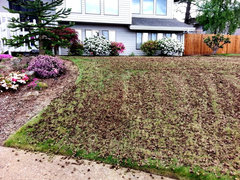


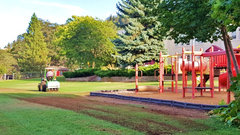

High Tech Turf & Trees
6 years agoTo further clarify, the aerator has a full width roller set just in front of the aerating tines. It smooths ground and is used to set aerating tine depth. The resulting seed pockets have loose crumbling aeration cores, which dissolve, protecting emerging seedlings too. We do not roll after seeding. The seedlings need uncompacted soil with good tilth and oxygen. Any rolling should be much later with dry soil and little weight. Tru-Turf (Australia & worldwide) makes great rollers with 3 offset rollers per individual rolling head that rely on design and NOT weight for professional users. Scott Buley HTT&T



Dan Bartoes
2 years agoI have been doing this for almost 50 years and the key point is to improve seed contact with soil, so raking after seeding (by hand or with a spreader), followed by rolling is generally the best sequence. Depending on the quality of the soil determines the weight of the roller (lots of clay needs less weight; lots of humus requires a heavier roller), but eliminating air contact with the seed (or plant roots for transplanting bushes) is the goal. That is why the immediate and regular watering (just enough, not too much) works well. For those of us who have seen grass in an asphalt driveway, dirt compaction is seldom a issue.
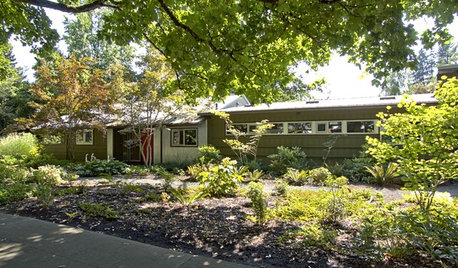

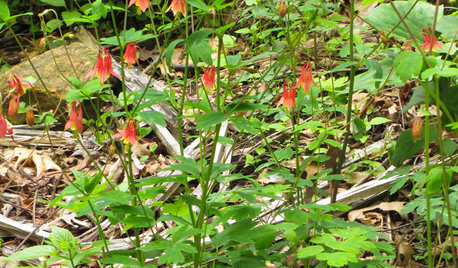
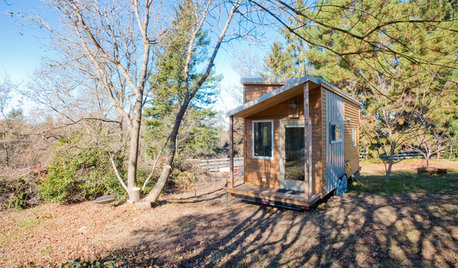




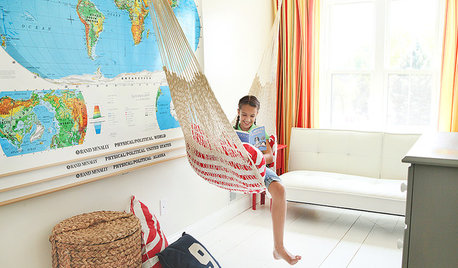








larjoranj